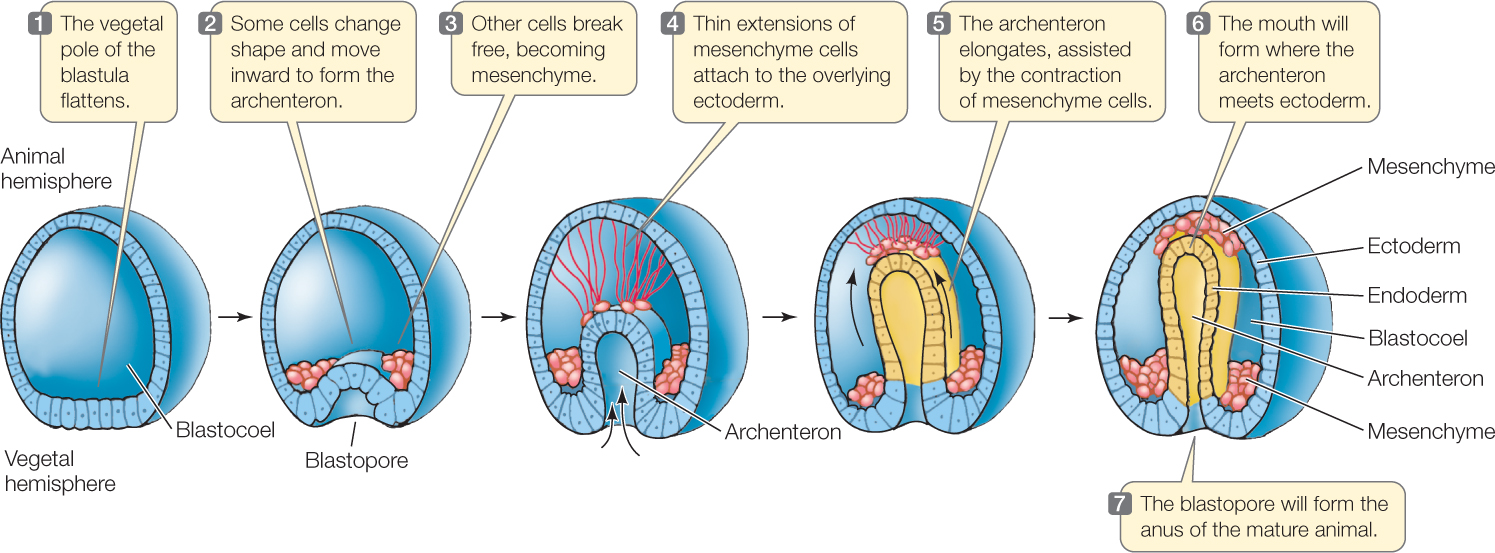
The role is chosen, and stays as such in the organism’s adult form. Additionally the cells roles (i.e this cell will be a neuron) are determined very early on in development. Protostomes exhibit spiral clevage in their cells, since each layer is offest slightly. This pore deepens, forming the gut and eventually the anus.


In other words, during protostome development the first opening to appear in a blastopore becomes the mouth of the organism. Typically, the protostome condition is defined by a spiral and determinant cleavage in the early stages of embryo development, schizocoelous coelom formation (as the archenteron (embryonic gut) forms the coelom begins as splits within the solid mesodermal mass, and the formation of the blastopore (the original opening) into the mouth. Protostomes are any of a major group of animals defined by its embryonic development, in which the first opening in the embryo becomes the mouth. The Protostomes in contrast include the great majority of animal species, such as arthropods, molluscs, annelids, and many less well-known taxa. We probably consider them (and specifically the vertebrates) important mainly for anthropocentric reasons (we are deuterostomes). The Deuterostomes are a relatively small (in terms of species and abundance) group that includes vertebrates, echinoderms, and a few assorted minor phyla. These are distinguished by embryonic cleavage patterns, the fate of the blastopore and coelom formation.

The Bilateral (and Coelomate) phyla can be divided into two groups, variously called the Schizocoela and Enterocoela, or the Protostomia and Deuterostomia.


 0 kommentar(er)
0 kommentar(er)
